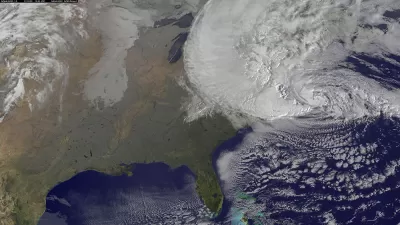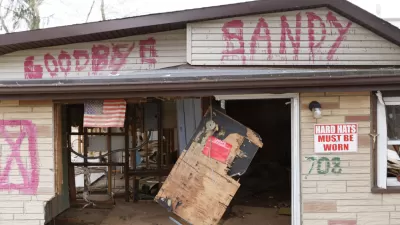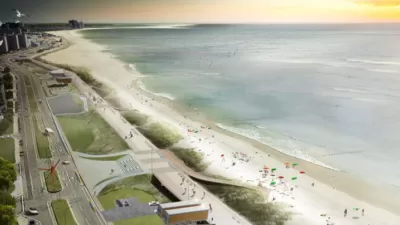A massive infrastructure project is on the table in New York, after the U.S. Army Corps of Engineers released a new feasibility study.

"[T]he U.S. Army Corps of Engineers has proposed several different approaches to preventing flood surges using gates and berms in and around New York Harbor, and environmentalists are sounding the alarm," reports Jonathan Hilburg.
The proposals are part of the New York-New Jersey Harbor and Tributaries Coastal Storm Risk Management Feasibility Study, a 2,150-mile survey of the region’s most vulnerable areas. The Corps has put together five schemes—four that use storm barriers, and one “as is” projection—and is soliciting feedback from New York and New Jersey residents with a series of information sessions this week.
As noted by Hilburg, the project will have to negotiate a tricky balance between property protection and environmental protection. Clean Water advocates at Riverkeeper have already expressed concerns about the Army Corps approach to infrastructure. The article includes a lot more detail about the Hudson River tidal estuary and the schemes included in the feasibility study.
The Army Corps is holding a series of public information meetings on the feasibility study this week.
FULL STORY: Army Corps of Engineers proposes swinging sea gates for New York Harbor

Trump Administration Could Effectively End Housing Voucher Program
Federal officials are eyeing major cuts to the Section 8 program that helps millions of low-income households pay rent.

Planetizen Federal Action Tracker
A weekly monitor of how Trump’s orders and actions are impacting planners and planning in America.

Ken Jennings Launches Transit Web Series
The Jeopardy champ wants you to ride public transit.

Crime Continues to Drop on Philly, San Francisco Transit Systems
SEPTA and BART both saw significant declines in violent crime in the first quarter of 2025.

How South LA Green Spaces Power Community Health and Hope
Green spaces like South L.A. Wetlands Park are helping South Los Angeles residents promote healthy lifestyles, build community, and advocate for improvements that reflect local needs in historically underserved neighborhoods.

Sacramento Plans ‘Quick-Build’ Road Safety Projects
The city wants to accelerate small-scale safety improvements that use low-cost equipment to make an impact at dangerous intersections.
Urban Design for Planners 1: Software Tools
This six-course series explores essential urban design concepts using open source software and equips planners with the tools they need to participate fully in the urban design process.
Planning for Universal Design
Learn the tools for implementing Universal Design in planning regulations.
Heyer Gruel & Associates PA
Ada County Highway District
Institute for Housing and Urban Development Studies (IHS)
City of Grandview
Harvard GSD Executive Education
Toledo-Lucas County Plan Commissions
Salt Lake City
NYU Wagner Graduate School of Public Service





























